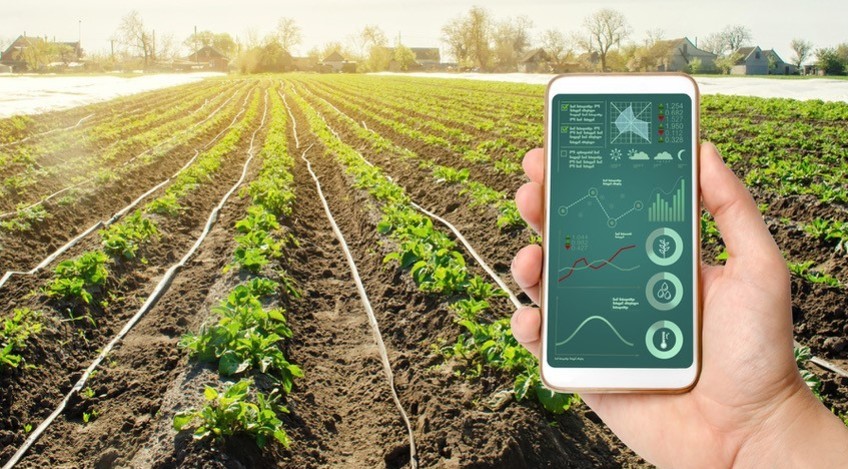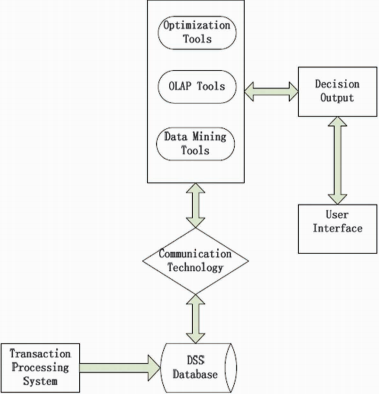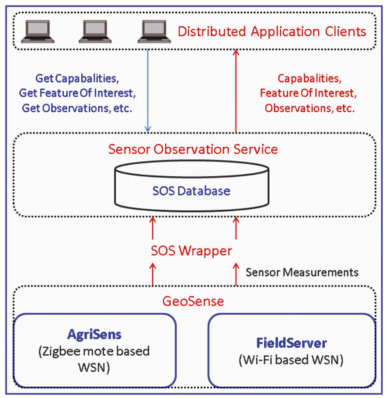Utilising artificial intelligence (AI) for effective decision making in agriculture
The major advancements that have been made in computing and technology, coupled with societies’ trust in machine learning, has provided a basis for vast amounts of data to be utilised to improve the rate of production and sustainability within the agricultural sector.
Artificial intelligence (AI) in agriculture
The implementation of artificial intelligence (AI) as a means of improvement has been trialled in several sectors over the last decade. However, only recently has it become apparent that AI can be used to improve decision making in agriculture. In particular, the implementation of AI technologies could provide farmers with the opportunity to make better decisions that increase efficiency in crop and livestock production.
There are several factors behind the agricultural sector’s decision to embrace the use of AI technologies to improve decision making. At the forefront is the undoubtable increase in the amount of data available, as well as the improvement in ease of accessing the data. This is made possible through developments made within the sector, such as the increased use of sensors, improved rate of access to satellite images, reduced costs of data loggers, increased use of drones and better access to government data repositories.
However, despite this positive increase, the sector now faces a new challenge of collating the volume of data into data sets useable by farmers, as well as applicable to farms on a local, regional and national level.

Decision support systems (DSS) to improve agricultural production
Over the last decade, there have been several key studies dedicated to reporting on how the application of decision support systems (DSS) in agriculture improves production and systems management. The application of decision support systems (DSS) using AI technologies have been utilised in areas such as, farm planning, crop management, soil and water conservation, pest and disease management, horticulture and fertiliser management.
Hochman and Carberry (2011) proposed a set of requirements that should accompany the use of DSS in agriculture. One key requirement was to ensure that the application of DSS complimented farmers’ naturalistic decision-making processes, whilst simultaneously educating them with optimised suggestions. This was key in ensuring that the farmer’s needs were satisfied and that data that would have otherwise not been accessible, was available.
Armstrong et al. (2010) developed a framework for an information technology-based decision support system (DSS) for use in agricultural environments. In contrast to Hochman and Carberry (2011), Armstrong et al. (2010) developed this framework with the intention of it being integral in improving the effectiveness of decision making, using the following activities; data capture, data processing and data analysis.
Developing a decision support system (DSS)
Typically, the first stage in developing a decision support system (DSS) is the acquisition of data. There are varying data types that can be used in an agricultural setting, such as weather indices, soil and crop/pasture growth parameters and irrigation. Advances in the use of technology (e.g. sensor hardware, satellites, drones, proximal sensing, etc) and the development of online and offline systems to house this data (cloud systems) has resulted in more efficient and accurate DSS.
With the agricultural sector’s rapid acceptance of digital farming technologies, the need for decision support systems (DSS) has risen drastically. This next section will provide a brief description of the common digital farming technologies implemented across the agricultural sector to improve decision making.
Digital image processing
Digital image processing is utilised for systems whose inputs and outputs are images, as well as systems that rely on processes to extract attributes from images, up to and including the recognition of individual objects.
Leaf area index (LAI)
Leaf area index (LAI) can be used to measure crop growth, as well as the presence of pests and diseases.
Normalised difference vegetation index (NVDI)
Normalized difference vegetation index (NVDI) is a technique that can be used by farmers to measure canopy size and vegetation greenness. With this data, farmers can analyse the data and form an estimation on nitrogen content, water stress, post-anthesis stay-green and pre-anthesis biomass.

A general framework of DSS. Source: Zhang et al. (2012a,b).
Core AI technologies
So far, we’ve discussed the reason for decision support systems (DSS) in agriculture, how to develop them, as well as the common techniques used. In this next section, we’re going to discuss the practical application of core AI technologies and how they can improve decision making, as well as the level of data quality.
Data mining, artificial neural networks (ANNs), Bayesian networks (BNs) and support vector machines (SVMs) are the core AI technologies that have been developed to assist in the analysis of data collected across the agricultural sector. Below we provide a brief definition of the key technologies, as well as suggestions for their usage.
Data mining
Although a relatively new development, data mining is the process of collating multiple sets of data, analysing that data from differing perspectives and then summarising the findings into useful and accessible information. The process of data mining is data cleaning, data integration, data selection, data transformation, data mining, pattern evaluation and knowledge presentation.
Artificial neural networks (ANNs)
Artificial neural networks (ANNs) are built upon the premise of the biological processes of the human brain. This model consists of several layers, such as input, middle and output layers. Examples of the application of ANNs in an agricultural environment include crop development modelling, pesticide and nutrient loss assessments, soil retention estimates, prediction of potential diseases and the fertility of hen eggs.
Bayesian networks (BNs)
A Bayesian network (BN) is an approach developed that represents both the beliefs and knowledge through probabilities. This method is particularly popular for use on extremely complex systems; either in their structure or functionality.
Support vector machines (SVMs)
Support vector machines (SVMs) are a relatively new development in the field of supervised machine learning methods. SVMs have been utilised across the agricultural sector for varying purposes, including to classify crops, to detect weed and nitrogen stress in maize and to forecast demand and supply for pulp wood.
Case study 1: AgData DSS for Western Australia
AgData is a web-based decision support tool that provides users with real-time information and access to weather data. This data can then be used by farmers to estimate projected crop yields for different varieties spanning varying regions.
Case study 2: GeoSense
GeoSense is a decision support tool developed using low-cost SN technology that enables the collection of real-time data from micro-climatic parameters.
The GeoSense tool incorporates geographical information and communication technologies (Geo-ICT) with WSN to gather location-orientated information.
The GeoSense includes the following five modules; crop water requirements, rice yield simulation, energy balance, weather profiles and crop pest and disease protection. Reported in Adinarayana et al. (2012), the GeoSense would be able report real-time data and information to users through a combination of wireless sensor networks (WSNs) and cloud services.

Oriented architecture for GeoSense. Source: Adinarayana et al. (2012).
Case study 3: Rice-based DSS
Some decision support tools are developed with a particular commodity in mind. For example, Gandhi et al. (2016) developed a DSS to support rice production in India. This DSS functioned through a combination of neural networks and association rule mining.
The tool consists of the following components:
• Interface layer
• Input layer
• Processing layer
• Database layer
Each layer offers the user several options to select from that is most applicable to their research. From this, the user advances to the next layer where further options are listed, dependent on the option previously selected.
This selection process continues until each layer has been viewed and an option has been selected from each layer. Using this, the DSS tool generates the data requested by the user, e.g. potential climate scenarios which can be used to predict rice yields and variety.
Further reading: Additional research studies on the use of DSS in agriculture
With the sheer volume of research completed on the use of DSS in agriculture, we unfortunately can’t report on them all. However, please find below additional studies completed in the last decade that show the advancement in the successful use of DSS in agriculture.
Zhang et al. (2012) – Developed a DSS that included varying modules, such as a transaction processing system, database, communication technology, data mining tools, OLAP tools, optimisation tools, decision output and a user interface.
Tanaka and Kiura (2014) – Developed a similar approach to DSS in agriculture which relied on a meteorological data acquisition function, an automatic weather data generator, crop models and crop model execution engine, alongside display and comparison functions.
Armstrong and Nallan (2016) – Developed the AgMine DSS; a system that farmers could use to improve their decision-making process when selecting crop variety, dependent on varying agronomic and climatic environments in Western Australia. The AgMine DSS functions through the following key components: data input, data mining, statistical analysis, a DSS database, a prediction module and a visualisation module. The model depicts how visualisation and data mining modules can be used collaboratively to improve the decision making of farmers.
The future
The future of decision support systems (DSS) and their continued use within the agricultural sector is dependent on the support of governments, universities, institutions and private enterprises worldwide.
For many, the use of AI is essential to ensure that the decision making in agriculture is as efficient and enhanced as possible, as it can provide farmers with the opportunities to make smarter decisions in crop and livestock production.
The successful implementation of AI technologies and the reliability of data collection are means to show the advancement of the agricultural sector, as well as the possibilities for its further improvement.
However, despite the sector’s acceptance of AI and its accompanying technologies, there remains a need to fully comprehend the impact of its implementation, as well as how AI can be utilised to best complement other rapidly evolving technologies such as robotics, cloud systems, data analytics and bioinformatics.
There is seemingly no doubt that the application of AI technologies to support DSS in agriculture will continue to grow, however it’s the challenges and issues that arise because of its use that the sector must address.
About this Inside Analysis
This article has been written by Katherine Lister - Marketing Executive at Burleigh Dodds Science Publishing. The content has been derived from Advances in artificial intelligence (AI) for more effective decision making in agriculture
About the author
Dr Leisa Armstrong is Senior Lecturer in Computer Science and leader of the eAgriculture Research Group at Edith Cowan University, Australia. Dr Armstrong is President of the Australian Society of ICT in Agriculture as well as past President of the Asian Federation of Information Technologies in Agriculture (AFITA).







